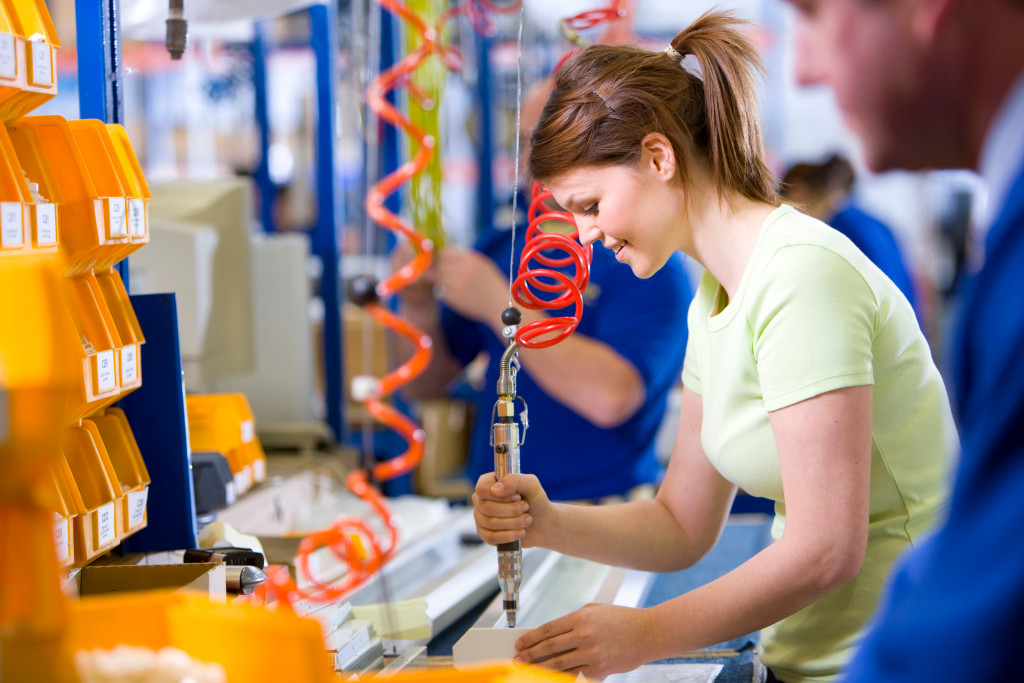- The manufacturing industry is undergoing a transformation with the help of technological advances such as 3D printing and robotics.
- Adopting new technologies in manufacturing can facilitate increased efficiency, improved product quality, cost savings, and customization capabilities.
- Incorporating new technologies comes with an initial investment that may require more work for smaller businesses to afford.
- The need for skilled workers to operate and maintain these new technologies can also present a challenge for manufacturers.
- Cybersecurity risks posed by interconnected devices and regulatory compliance requirements must also be addressed when utilizing new technologies.
The manufacturing industry is undergoing a momentous transformation as new technologies revolutionize traditional production and distribution methods. Integrating cutting-edge technologies, like 3D printing and robotics, fundamentally changes how businesses operate in this industry. With the incorporation of digital technology into industrial processes, productivity levels are skyrocketing by up to 25 percent, while the time to market has been reduced by as much as 50 percent.
Moreover, these advancements are increasing the flexibility and customization of production while simultaneously improving the quality of manufactured goods. This article will explore the ways in which technology is transforming the manufacturing sector, highlighting the benefits and challenges of these innovative developments.
3D Printing and Rapid Prototyping
3D printing has been around for decades, but in recent years it has become much more accessible and cost-effective. It is now being used to quickly create product prototypes, allowing companies to test their designs before mass production. This can help reduce development costs and time-to-market for new products.
Additionally, 3D printing can quickly produce custom parts or components on demand with minimal waste material. This technology has also facilitated the development of a machine for laser engraving, which can be used in conjunction with 3D printing to create intricate and detailed designs.
Robotics
Robots have long been utilized in industrial settings like factories and warehouses, but recent advances in AI technology and automation make them increasingly more intelligent and autonomous.
Robots can now perform complex tasks with precision, such as sorting items within a warehouse or packaging finished products for shipment. They can also adjust their behavior depending on changes in their environment—allowing them to react faster than human workers.
This makes robots ideal for applications where speed and accuracy are essential, such as automated assembly lines or mass production of consumer goods.
Data Analytics
Big data analytics is changing how manufacturing companies make operations decisions. By collecting data from various sources—including sensors placed on factory machines—manufacturers can gain valuable insights into how their processes are running and identify areas of improvement.
For example, data analytics can predict when a machine may need maintenance or when certain components may need replacing before they cause a breakdown in production. This allows manufacturers to optimize their operations for maximum efficiency while minimizing downtime due to unexpected issues.

The Benefits of New Technologies in the Manufacturing Industry
The manufacturing industry is constantly evolving and adapting to new technologies, and the benefits of these advancements are becoming increasingly evident. With the introduction of new technologies, manufacturers can streamline their operations, improve quality, and reduce costs.
In this context, it’s worth examining the various benefits new technologies can bring to the manufacturing industry.
Increased Efficiency
New technologies have revolutionized the way manufacturers operate by increasing efficiency and productivity. Robotics, for example, has enabled manufacturers to automate repetitive tasks, reducing production time and costs.
Automating the manufacturing process can also help minimize the risk of errors, saving manufacturers a lot of time and money in the long run.
Improved Quality
Incorporating new technologies such as AI and robotics into the manufacturing process has the potential to improve product quality and reduce the risk of defective products reaching customers.
Through the use of machine learning algorithms, manufacturers can analyze data from the production process and detect anomalies in real time, allowing them to take corrective action before any defects become a problem.
The result is a more substantial brand reputation and increased customer loyalty, which is crucial for any business looking to succeed in today’s competitive marketplace.
Cost Savings
One of the most significant benefits of new technologies in the manufacturing industry is their cost savings. Manufacturers can reduce labor costs and waste by automating repetitive tasks and optimizing processes.
For instance, the adoption of 3D printing technology has made it possible to produce custom-made products at a lower cost than traditional manufacturing methods, reducing the need for expensive tooling and molds.
Customization
The ability to create custom-made products is a significant benefit that new technologies bring to the manufacturing industry. Additive manufacturing, or 3D printing, has made it possible to create one-of-a-kind products quickly and at a lower cost.
Manufacturers can also offer customized products to individual customers, improving customer satisfaction and loyalty.

The Challenges of New Technologies in the Manufacturing Industry
While new technologies bring significant benefits to the manufacturing industry, they also present several challenges, such as:
High Initial Investment
Implementing new technologies in the manufacturing industry requires a significant initial investment, which can be a barrier for small and medium-sized manufacturers.
Need for Skilled Workers
New technologies require skilled workers who can operate and maintain them. The shortage of skilled workers can be a challenge for manufacturers, and it may take time to train existing workers or hire new ones.
Cybersecurity Risks
IoT and other interconnected technologies in the manufacturing industry also present cybersecurity risks. The interconnected devices and networks used in the industry can be vulnerable to cyber attacks, leading to potential production downtime and loss of valuable data.
Regulatory Compliance
New technologies in the manufacturing industry may be subject to regulatory compliance requirements, such as safety and environmental regulations. Compliance can be costly and time-consuming for manufacturers, but failure can lead to legal and financial consequences.

Technology is revolutionizing the manufacturing industry in many ways, from 3D printing and rapid prototyping to robotics and big data analytics. These technologies allow companies to produce goods faster than ever while minimizing waste material and optimizing efficiency.
However, adopting these technologies also presents challenges, such as the need for skilled workers, cybersecurity risks, and regulatory compliance requirements. Manufacturers must carefully weigh the benefits and challenges of these technologies to determine the best approach for their operations.
As these technologies become more advanced over time, there’s no telling what other transformations they could bring about in the future!




